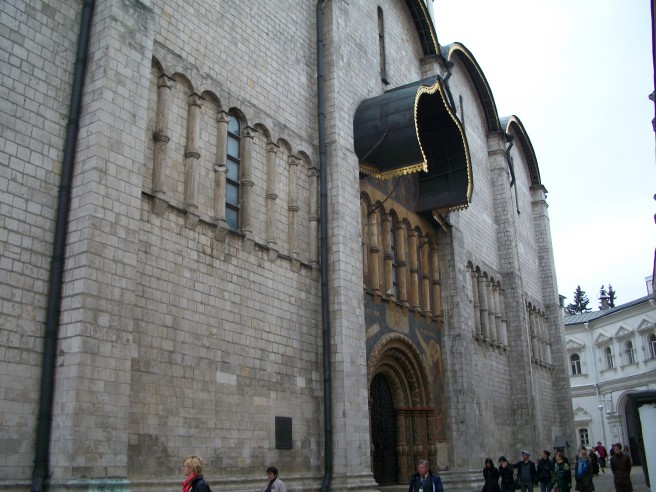It is very trendy for art historians to talk about “cultural interaction” and the hybrid works created during a given period of interaction. My research focuses on the interaction between Muscovy (Russia) and northern Italy during the fifteenth and sixteenth centuries, so I’m definitely a part of this trend. Most scholars of early modern art no longer sit around pontificating about the greatness of Italian Renaissance artists, with many scholars instead seeking to reveal and understand the networks that connected what were once thought to be culturally distinct regions of the world.
I have completely fallen for this line of scholarship. Not only is the resulting “hybrid” art and architecture utterly fascinating, but there are myriad stories in the shadows of these histories that are just aching to be told. (If only I were a novelist!) Consider for example:
In 1472 Ivan III of Muscovy married Sophia Palaiologina, the orphaned princess of the by then defunct Byzantine Empire. She was still a child when the empire collapsed in 1453, and both of her parents died just a few years later. An Orthodox Christian, she was taken in by Cardinal Bessarian, who was a high-ranking member of the Catholic Church (and also of Byzantine origin). As such, Sophia spent her teen years in Rome, where she converted to Catholicism and witnessed the “flowering” of the Renaissance firsthand. When she was a young woman, she was shipped off to distant Moscow to marry a man who followed the religion of her homeland. Ivan saw his country as continuing on the traditions of the Byzantine Empire—indeed he understood Muscovy to be the heir of the collapsed empire.
Poor Sophia! What a jumbled, confused life she led. I think of her journey to Moscow often. She left Rome in June and didn’t arrive until November. What was that journey like? She had an entourage travelling with her, but I still think of how trepidatious and alone she must have felt. Or perhaps not. Maybe she had become used to a feeling of homelessness, to being passed around like a family heirloom. Unless any new historical documents are uncovered, we’ll likely never know how she felt. Though it seems easy enough to contemplate.
I also think about the many Milanese, Bolognese, Venetian, and Roman architects and engineers who traveled to Moscow in the years after Sophia’s arrival. Aristotele Fioravanti was the first to head to Moscow, where he built the Cathedral of the Dormition in the Kremlin. The historical documents reveal that the building was greatly admired and beloved by Ivan III and other high-ranking Muscovites. Indeed, so valuable was Fioravanti to Ivan, that he was held in Moscow against his will after his agreed tenure had ended. He died in Moscow in 1486, probably in jail or under house arrest.
When I look at works of art that resulted from cultural encounters such as this, I try to think of the many lives that were affected. There is drama in any project, but the wrenching of people out of their homelands (or the invasion of one’s homeland, as so often happened in other parts of the world) and the subsequent mingling of cultures was an inherently brutal process.
With this history in mind, I give you some photos I took of Fioravanti’s Dormition. Some sources have claimed that Sophia commissioned the building. That seems unlikely, though she very may well have been largely involved in its planning and perhaps even the recruitment of Fioravanti. Whatever the case, her presence in Moscow supported the ideology that Ivan proclaimed when he began rebuilding the churches and palaces in the Kremlin.





Your research interests definitely hit on an interesting cross-feeding of styles and cultures. Looking forward to reading more!
LikeLike
Thank you, Christina! Glad to learn of your site as well!
LikeLike